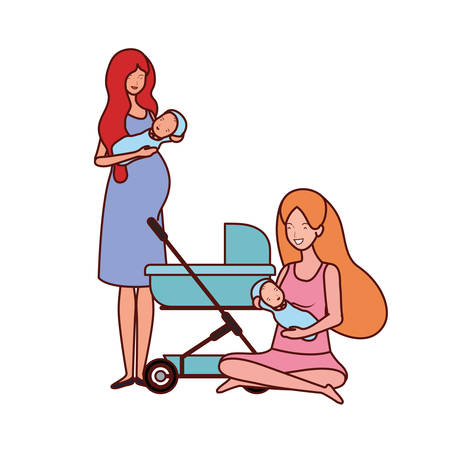1. Introduction to Choking Hazards
Choking is a serious risk for babies, especially because they are still learning how to chew and swallow properly. Their airways are small, making it easier for food or small objects to get stuck. As parents and caregivers, understanding why babies are at risk of choking and recognizing common hazards can help prevent dangerous situations.
Why Are Babies More Likely to Choke?
Babies explore the world by putting things in their mouths. This natural curiosity, combined with their developing swallowing skills, increases the likelihood of choking. Additionally, infants have smaller airways that can easily become blocked by food or objects.
Common Reasons Babies Choke
| Reason | Description |
|---|---|
| Lack of Teeth | Babies may not have enough teeth to properly chew food before swallowing. |
| Narrow Airways | Their small windpipes make it easier for food or objects to become lodged. |
| Eager Eating | Babies often swallow food quickly without chewing thoroughly. |
| Poor Coordination | Their ability to move food from the front of the mouth to the back is still developing. |
The Importance of Awareness
Being aware of common choking hazards can help you take proactive steps to keep your baby safe. Whether its choosing appropriate foods, supervising mealtime, or keeping small objects out of reach, understanding these risks is crucial for preventing choking incidents.
2. Common Food Choking Hazards
Babies and toddlers are still learning how to chew and swallow properly, which makes them more vulnerable to choking. Certain foods pose a higher risk because of their size, shape, and texture. Below is a list of common choking hazards and tips on how to modify them for safer consumption.
High-Risk Foods and Safer Alternatives
| High-Risk Food | Why Its Dangerous | Safe Alternative |
|---|---|---|
| Whole grapes | Grapes are round and slippery, making them easy to block the airway. | Cut grapes into quarters lengthwise before serving. |
| Hot dogs | The cylindrical shape can easily lodge in a childs throat. | Slice hot dogs into thin strips or small bite-sized pieces. |
| Nuts and seeds | Nuts are hard and small, making them difficult to chew properly. | Avoid whole nuts; use nut butters spread thinly on soft bread or crackers. |
| Raw vegetables (carrots, celery, etc.) | Hard textures make raw veggies tough to chew for young children. | Cook vegetables until soft or cut them into very thin strips. |
| Popped popcorn | Kernels can be inhaled easily and cause choking. | Avoid giving popcorn to children under four years old. |
| Candy (hard candy, gummies, marshmallows) | Tough textures and sticky consistency make these difficult to swallow safely. | Avoid entirely for babies and toddlers; opt for soft fruit purees instead. |
Tips for Preventing Choking While Eating
- Sit down while eating: Always have your child sit upright during meals instead of walking or playing while eating.
- Avoid distractions: Keep mealtime focused—no screens or toys that could lead to rushed eating.
- Cut food into appropriate sizes: Small, manageable bites reduce the risk of large pieces getting stuck in the throat.
- Softer is safer: Cook hard foods like carrots or apples until they’re soft enough for easy chewing.
- No spoonfuls of peanut butter: Thick spreads can be hard for little ones to swallow safely; serve in small amounts spread thinly on toast or crackers.
- Sit with your child during meals: Always supervise meals so you can respond quickly if needed.
Making small changes in how food is prepared and served can significantly reduce the risk of choking. By being mindful of food textures and portion sizes, you can help ensure a safe eating experience for your baby or toddler.

3. Non-Food Choking Hazards
When we think about choking hazards, food is often the first thing that comes to mind. However, many common household items can also pose a serious risk to babies and toddlers. Small objects that fit into a childs mouth can become lodged in their airway, leading to choking. Here are some of the most common non-food choking hazards and how you can keep them out of reach.
Common Household Choking Hazards
Babies are naturally curious and love to explore by putting things in their mouths. Unfortunately, this means that small household items can be dangerous if left within reach. Below is a table listing some of the most common non-food choking hazards found at home:
| Item | Why Its Dangerous | How to Keep It Out of Reach |
|---|---|---|
| Small Toys & Toy Parts | Toys with small detachable parts can easily be swallowed. | Check age recommendations on toys and keep small pieces away from young children. |
| Coins | A coin can block a baby’s airway and cause choking. | Avoid leaving loose change on tables or floors where a child can grab them. |
| Button Batteries | If swallowed, they can cause severe internal burns and choking. | Store batteries in secure containers and check battery compartments on electronic devices. |
| Pens & Marker Caps | The small caps can get stuck in a child’s throat. | Use pens with vented caps and keep markers stored securely. |
| Balloons (Uninflated or Broken) | Balloons can conform to a childs throat and block airflow. | Avoid giving balloons to young children and promptly discard broken pieces. |
| Pills & Vitamins | Their small size makes them easy for a child to swallow accidentally. | Store all medications in childproof containers out of reach. |
Toy Safety Tips
Toys are one of the most common sources of non-food choking hazards. To ensure your baby’s safety, follow these toy safety tips:
- Follow age recommendations: Always choose toys that are appropriate for your childs age group.
- The toilet paper roll test: If an object fits inside an empty toilet paper roll, it is too small for a baby to play with.
- Avoid small detachable parts: Toys with removable eyes, buttons, or beads should be kept away from infants.
- Regularly inspect toys: Check for broken or worn-out parts that could become choking hazards.
- Keeps toys organized: Store small toys separately from larger ones to prevent accidental exposure.
Create a Safe Play Area
An effective way to reduce non-food choking hazards is by creating a safe play environment for your child. Here’s how you can do it:
- Crawl at their level: Get down on your hands and knees to see what small objects might be within reach.
- Keeps floors clean: Regularly sweep and vacuum to remove tiny objects that could be picked up by little hands.
- Siblings’ toys: Teach older siblings to keep their small toys out of the babys reach.
- Batteries & coins storage: Use secure containers for storing batteries, coins, and other small objects.
- No access zones: Restrict access to areas where small items are commonly found, like office drawers or craft supplies.
The best way to prevent non-food choking incidents is through constant supervision and making sure hazardous objects are kept safely away from little hands. By being aware of these common risks and taking simple precautions, you can create a safer environment for your baby to explore and grow.
4. Preventative Measures for Parents and Caregivers
Tips on Proper Meal Preparation
Preparing food safely for your baby is essential in reducing choking risks. Make sure to cut food into small, manageable pieces and avoid high-risk foods like whole grapes, nuts, and chunks of meat or cheese. Below is a quick guide on how to prepare common foods safely:
| Food Item | Unsafe Form | Safe Preparation |
|---|---|---|
| Grapes/Cherry Tomatoes | Whole | Cut into quarters lengthwise |
| Hot Dogs/Sausages | Round slices | Cut lengthwise into thin strips |
| Carrots | Raw, round slices | Cooked until soft or grated |
| Nuts/Seeds | Whole | Finely ground or in butter form (e.g., peanut butter spread thinly) |
| Bread/Bagels | Thick, chewy chunks | Torn into small pieces or lightly toasted for easier chewing |
| Cheese Cubes | Cubed | Shredded or thinly sliced |
Supervising Meal and Playtime
Close supervision during meals and playtime is one of the most effective ways to prevent choking. Always ensure that your baby is seated upright while eating and avoid distractions like walking, running, or lying down with food in their mouth. Here are some key supervision tips:
- Always stay within arm’s reach: Never leave your baby unattended while eating.
- Create a calm eating environment: Avoid rushing mealtime and minimize distractions.
- Avoid feeding in car seats or strollers: These positions can make it harder for babies to swallow properly.
- Monitor toy safety: Ensure that toys do not have small parts that could pose a choking hazard.
- Keep hazardous objects out of reach: Small household items like coins, buttons, and batteries should be stored securely.
Teaching Safe Eating Habits
Helping your baby develop good eating habits can further reduce choking risks as they grow. Encourage these safe practices from an early age:
- Teach slow eating: Encourage your child to take small bites and chew thoroughly before swallowing.
- Avoid stuffing food in the mouth: Guide your baby to take only one bite at a time.
- No talking with food in the mouth: Explain the importance of chewing first before speaking.
- No eating while playing: Make sure your child sits down for all meals and snacks.
- Praise good eating behavior: Reinforce positive habits with encouragement and patience.
By following these preventative measures, parents and caregivers can significantly lower the risk of choking incidents and create a safer environment for their little ones during meals and playtime.
5. Emergency Response: What to Do If a Baby Chokes
Despite our best efforts to prevent choking, accidents can still happen. Knowing how to respond quickly and effectively can save a babys life. Follow these step-by-step instructions to help a choking infant.
Step-by-Step Guide for Helping a Choking Baby
1. Assess the Situation
First, determine if the baby is coughing or unable to breathe. If they are coughing forcefully, encourage them to keep coughing, as this may help clear the airway on its own.
2. Call 911 if Necessary
If the baby is unable to cry, cough, or breathe, call 911 immediately or have someone else call while you begin first aid.
3. Give Back Blows
- Sit down and hold the baby face-down on your forearm, supporting their head and neck with your hand.
- Rest your forearm on your thigh for stability.
- Using the heel of your hand, deliver five firm back blows between the babys shoulder blades.
4. Perform Chest Thrusts
- If back blows do not work, turn the baby face-up while keeping their head lower than their chest.
- Place two fingers in the center of their chest just below the nipple line.
- Give five quick chest thrusts by pressing down about 1.5 inches.
5. Repeat Until Help Arrives or Airway Clears
If the object does not come out, continue alternating between five back blows and five chest thrusts until emergency responders arrive or the baby begins breathing normally.
When to Stop First Aid Efforts
| If This Happens | What You Should Do |
|---|---|
| The baby starts crying or coughing | Monitor their breathing and comfort them. |
| The object comes out but baby is still struggling | Seek medical attention to ensure no internal injury. |
| The baby becomes unresponsive | Began infant CPR and continue until help arrives. |
Knowing these steps ahead of time can make all the difference in an emergency. Always stay calm and act quickly when responding to a choking incident.


